Free Estimates
(805)532-1710
FREE ESTIMATE-24/7 SERVICE
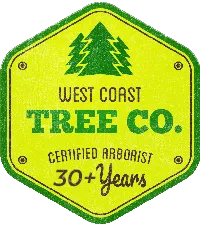
Free Estimates
(805)532-1710

Tree We Work On

Schedule a free service estimate today!


Tree We Work On

Schedule a free service estimate today!
What Types Of Trees Do We Work On?
When you think of California, you might imagine the crashing of waves on the beach, an endless blue sky, and the beautiful nature that makes up The Golden State. There’s a plethora of trees that line the rocky and sandy terrain, all of which West Coast Tree Co. is fully equipped and licensed to handle. West Coast Tree Co. is your favorite team of friendly tree experts that can help you with all of your tree care needs. Headquartered in Thousand Oaks, we are the tree care professionals Southern California trusts most when it comes to dealing with the variety of trees that grow in the region. Whether you need help with your eucalyptus or a California pepper tree, our crew will know how to approach the situation with care and thorough detail. Find out for yourself by giving us a call today at 805-855-1887 and scheduling a free service estimate!
Blue Oak (Quercus Douglasii)

California’s Central Valley, Coastal Ranges, and Bay Area foothills have blue oak. The 50- to 82-foot-tall Blue Oak is also called Mountain Oak or Iron Oak. It has an irregular crown and gray, blue-green leaves. Slow-growing tree with sweet acorns. Sunlight and well-drained soil are required.
Valley Oak (Quercus Lobata)
Valley has large North American Oaks. This tree can reach 20 feet in five years and 40 in ten with proper care. 100-foot-tall, 600-year-old adults are possible. The Valley Oak has ridged bark and erratic branches. Autumn leaves cover its arching crown. The leaves’ undersides are paler and deeply lobed. Wildlife loves Valley Oak acorns. This messy tree likes moisture.
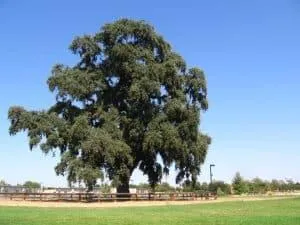
Our Services
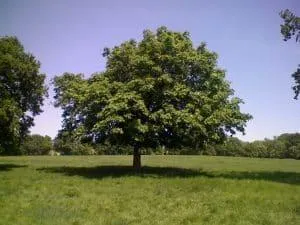
Oregon White Oak (Quercus Garryana)
Oregon White Oak grows from the coasts of the U.S. and Canada inland to lower elevations. In ideal conditions, this tree can grow to 90 feet tall. Conditions permitting, the plant can reach 20 feet. Large, lobed, deciduous leaves cover Oregon White Oak. Slow-growing tree with brown acorns and white or green blossoms.
California Black Oak (Quercus Kelloggii)
This deciduous tree from western North America has a broad, rounded crown and slender, horizontal branches. Grow 120-foot trees. Forked trunk, blackish bark, deeply lobed, large, green leaves, and large acorns distinguish the California Black Oak. 500-year-old trees grow slowly. Spring and winter bring greenish-yellow or creamy-white flowers.
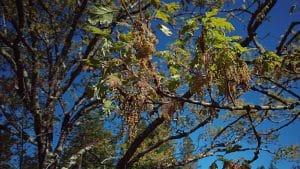
Services

Schedule a free service estimate today!
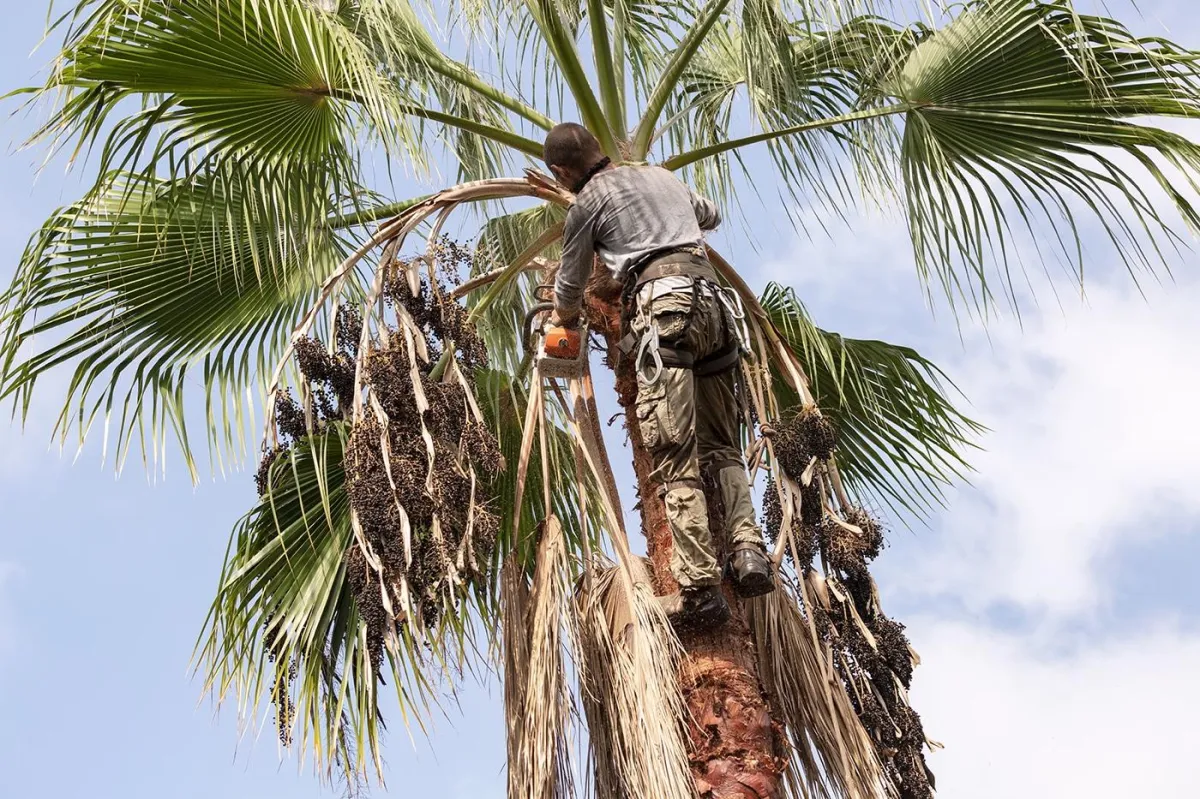
Services

Schedule a free service estimate today!

What Types Of Trees Do We Work On?
When you think of California, you might imagine the crashing of waves on the beach, an endless blue sky, and the beautiful nature that makes up The Golden State. There’s a plethora of trees that line the rocky and sandy terrain, all of which West Coast Tree Co. is fully equipped and licensed to handle. West Coast Tree Co. is your favorite team of friendly tree experts that can help you with all of your tree care needs. Headquartered in Thousand Oaks, we are the tree care professionals Southern California trusts most when it comes to dealing with the variety of trees that grow in the region. Whether you need help with your eucalyptus or a California pepper tree, our crew will know how to approach the situation with care and thorough detail. Find out for yourself by giving us a call today at 805-855-1887 and scheduling a free service estimate!
Blue Oak (Quercus Douglasii)

California’s Central Valley, Coastal Ranges, and Bay Area foothills have blue oak. The 50- to 82-foot-tall Blue Oak is also called Mountain Oak or Iron Oak. It has an irregular crown and gray, blue-green leaves. Slow-growing tree with sweet acorns. Sunlight and well-drained soil are required.
Valley Oak (Quercus Lobata)

Valley has large North American Oaks. This tree can reach 20 feet in five years and 40 in ten with proper care. 100-foot-tall, 600-year-old adults are possible. The Valley Oak has ridged bark and erratic branches. Autumn leaves cover its arching crown. The leaves’ undersides are paler and deeply lobed. Wildlife loves Valley Oak acorns. This messy tree likes moisture.
Oregon White Oak (Quercus Garryana)

Oregon White Oak grows from the coasts of the U.S. and Canada inland to lower elevations. In ideal conditions, this tree can grow to 90 feet tall. Conditions permitting, the plant can reach 20 feet. Large, lobed, deciduous leaves cover Oregon White Oak. Slow-growing tree with brown acorns and white or green blossoms.
California Black Oak (Quercus Kelloggii)

This deciduous tree from western North America has a broad, rounded crown and slender, horizontal branches. Grow 120-foot trees. Forked trunk, blackish bark, deeply lobed, large, green leaves, and large acorns distinguish the California Black Oak. 500-year-old trees grow slowly. Spring and winter bring greenish-yellow or creamy-white flowers.
Our Services
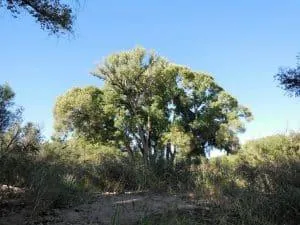
Fremont Cottonwood (Populus Fremontii)
Trees of the cottonwood species are common in wet areas and along waterways in North America. The maximum height for this type of tree is 35 meters (114 feet), and its maximum circumference is 1.5 meters (4.9 feet). White, clumpy fruits are said to ripen on the Fremont Cottonwood’s smooth trunk. This tree has leaves that are both heart-shaped and marked with thin white lines.
Oregon Ash (Fraxinus Latifolia)
Similarly to the Fremont Cottonwood, the Oregon Ash prefers to be planted in wet areas close to running water and lakes. Oregon Ash trees, which can live up to 250 years, make up a sizable portion of California’s ancient flora. Likewise, their height ranges from sixty to eighty feet. Additionally, these trees are distinguished by their simple, compound leaves and short, stubby branches. The blossoms themselves are tiny and unassuming.
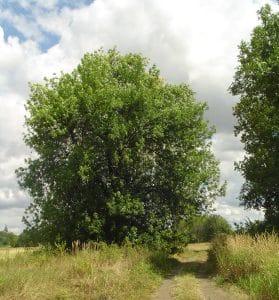
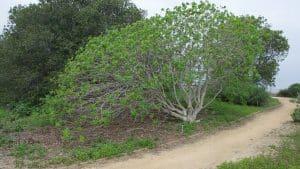
California Buckeye (Aesculus Californica)
California Buckeyes are 10–20 feet tall with a 30-foot canopy. Multiple trunks, silver bark, and low branches distinguish this tree. Natural roundedness makes them aesthetically pleasing. These trees have oval, dark-green leaves. The California Buckeye tree produces poisonous, animal- and human-harming seeds. Bees may be harmed by the nectar hummingbirds love.
California Pepper (Schinus Molle)
The California Pepper Tree is a robust evergreen that grows quickly. The pepper tree, which can reach heights of five stories with its deep, fibrous roots, is the tallest of all Schinus species and requires very little water. Its broad crown and drooping branches are reminiscent of the willow tree, another similar species.
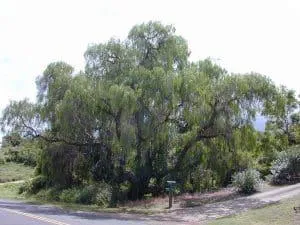
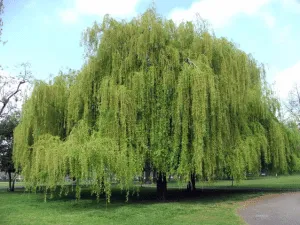
Willow (Salix)
The Salicaceae family includes willow trees and shrubs. Willow trees, of which there are up to 400 different species, thrive in cool climates with moist soil. Their lifespan may be up to 70 years, but in practice, they rarely live that long. The leaves of a willow tree are long and smooth, in contrast to the smooth and grey bark.
California Fan Palm (Washington Filifera)
These are, as the name implies, related to palm trees. They can reach heights of 49 feet to 66 feet, and widths of 10 feet to 20 feet. The low maintenance requirements and the fact that they thrive in moist soil mean they can be grown in suburban backyards.
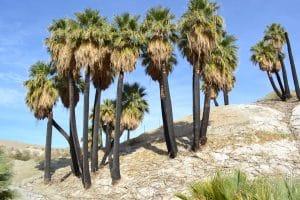
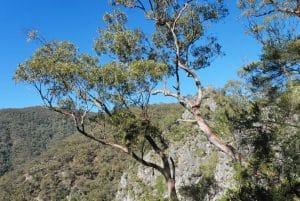
Tasmanian Blue Gum (Eucalyptus Globulus)
Eucalyptus is a Myrtaceae tree and shrub genus with over 700 species. Members of the genus dominate Australia’s tree flora, but they’ve been planted worldwide for 150 years and have been successful as exotics due to their fast growth, ability to adapt to degraded, acidic, and dry soils, prolific seed dispersal, and pest resistance.
Services

Schedule a free service estimate today!


Contact
24/7 Hour Service
(805)532-1710
Send Email
License #1109716
Copyright © 2022 West Coast Tree Service. All Rights Reserved.

Fremont Cottonwood (Populus Fremontii)
Trees of the cottonwood species are common in wet areas and along waterways in North America. The maximum height for this type of tree is 35 meters (114 feet), and its maximum circumference is 1.5 meters (4.9 feet). White, clumpy fruits are said to ripen on the Fremont Cottonwood’s smooth trunk. This tree has leaves that are both heart-shaped and marked with thin white lines.

Oregon Ash (Fraxinus Latifolia)
Similarly to the Fremont Cottonwood, the Oregon Ash prefers to be planted in wet areas close to running water and lakes. Oregon Ash trees, which can live up to 250 years, make up a sizable portion of California’s ancient flora. Likewise, their height ranges from sixty to eighty feet. Additionally, these trees are distinguished by their simple, compound leaves and short, stubby branches. The blossoms themselves are tiny and unassuming.

California Buckeye (Aesculus Californica)
California Buckeyes are 10–20 feet tall with a 30-foot canopy. Multiple trunks, silver bark, and low branches distinguish this tree. Natural roundedness makes them aesthetically pleasing. These trees have oval, dark-green leaves. The California Buckeye tree produces poisonous, animal- and human-harming seeds. Bees may be harmed by the nectar hummingbirds love.

Willow (Salix)
The Salicaceae family includes willow trees and shrubs. Willow trees, of which there are up to 400 different species, thrive in cool climates with moist soil. Their lifespan may be up to 70 years, but in practice, they rarely live that long. The leaves of a willow tree are long and smooth, in contrast to the smooth and grey bark.

California Pepper (Schinus Molle)
The California Pepper Tree is a robust evergreen that grows quickly. The pepper tree, which can reach heights of five stories with its deep, fibrous roots, is the tallest of all Schinus species and requires very little water. Its broad crown and drooping branches are reminiscent of the willow tree, another similar species.

Tasmanian Blue Gum (Eucalyptus Globulus)
Eucalyptus is a Myrtaceae tree and shrub genus with over 700 species. Members of the genus dominate Australia’s tree flora, but they’ve been planted worldwide for 150 years and have been successful as exotics due to their fast growth, ability to adapt to degraded, acidic, and dry soils, prolific seed dispersal, and pest resistance.

California Fan Palm (Washington Filifera)
These are, as the name implies, related to palm trees. They can reach heights of 49 feet to 66 feet, and widths of 10 feet to 20 feet. The low maintenance requirements and the fact that they thrive in moist soil mean they can be grown in suburban backyards.

Contact
24/7 Hour Service
(805)532-1710
Send Email
License #1109716
Copyright © 2022 West Coast Tree Service. All Rights Reserved.

What Our Customers Say
"







